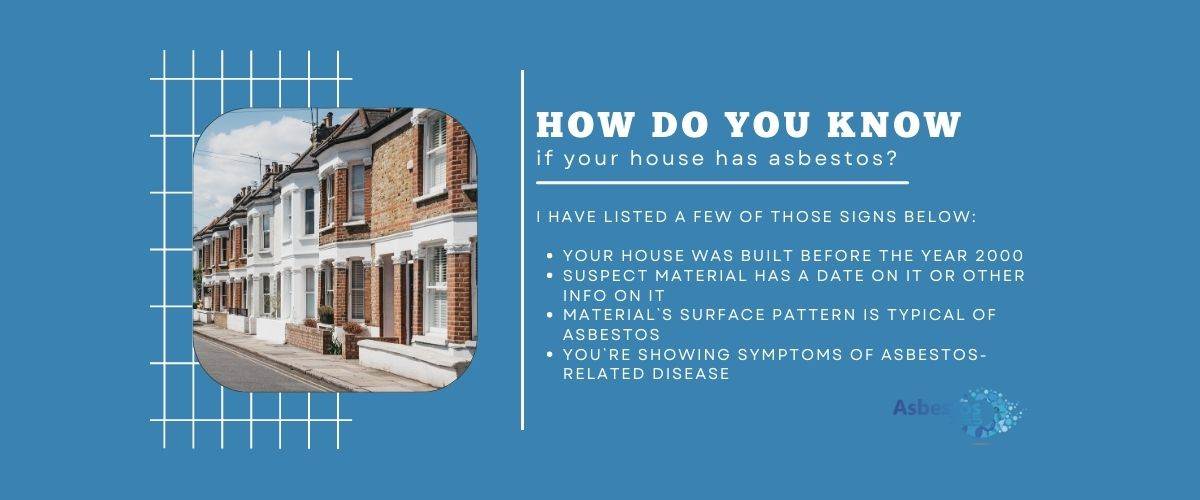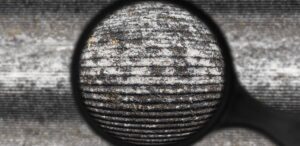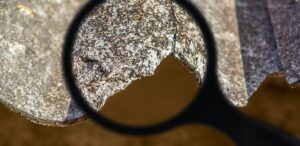How do you know if your house has asbestos?
I am often asked “how do I know if my house has asbestos?” and my aim here is to answer some of those concerns in this blog post.
Asbestos is a naturally occurring fibrous silicate mineral that, for most of the 20th century, saw widespread use in construction and other industries. Unfortunately, as time went on, it also became apparent that this once-ubiquitous substance posed a perilous risk to human health. Inhalation or ingestion of the material is associated with the development of serious, and frequently fatal, diseases such as mesothelioma and asbestosis.
Since 1999, the use of any kind of asbestos has been banned in the UK – but the material remains present in many residential and commercial buildings up and down the country.
It is important to note that the mere existence of asbestos in a given property does not mean a risk is immediately posed to human health; the danger typically arises when asbestos fibres are disturbed or released into the atmosphere.
Nonetheless, if you do worry that asbestos might be present in your home and bring an associated risk to health, you might be interested to know what the classic signs are of the notorious material being nearby. Individual asbestos fibres are, after all, invisible to the naked eye when they are released into the air.
I have listed a few of those signs below:

Your house was built before the year 2000
While you can’t guarantee whether a particular building will or won’t contain asbestos on the basis of its age alone – bearing in mind, for one thing, that any such material could conceivably have been removed from the building at some point – age is often a good indicator.
As the UK’s Health and Safety Executive (HSE) says, “asbestos can be found in any building built before the year 2000”, given that it was only in 1999 when the ban on all types of asbestos was imposed in this country.
Other indicators that asbestos may be present
The suspect material has a date and other information on it, indicating that asbestos might be present
If you are reading this article because there is a specific material in your home that you suspect might consist of asbestos to some degree, it could be worth keeping an eye out for any kind of label on the material.
If you see such a label, it might show important information, such as the manufacturer and product name or date of manufacture. From there, a Google search might be enough to throw up further details about the material and whether it is likely to contain asbestos.
The material’s surface pattern is typical of asbestos
Did you know that asbestos materials in the home tend to have a swirl or dimpled pattern on the surface? This is as opposed to the smoother surface texture that is often the case for newer materials that don’t have any asbestos in them.
This method doesn’t guarantee that a particular material in your home does or doesn’t contain asbestos. So, you will still have to depend on other approaches alongside this to be sure, such as arranging for an asbestos survey in Hertfordshire or wherever you happen to live.
However, given that some textured or patterned surface coatings popular in decades past – such as Artex – did frequently contain asbestos, if you do spot such an uneven surface in your home, you might have good reason to be cautious.


Symptoms of an asbestos-related disease
You are showing the symptoms of an asbestos-related disease
This is very much the “sign” of asbestos potentially being in your home, that we hope you never experience. And it is important to emphasise that even if you might have been exposed to asbestos in the past, this does not automatically mean you will develop a health condition arising from it.
Still, if you do experience troubling physical symptoms like those typically associated with asbestos exposure – such as shortness of breath, a persistent cough that gets worse over time, or blood coughed up from the lungs – we would certainly urge you to check with your doctor.
When you do so, the doctor might recommend an extensive physical examination, comprising lung function tests and a chest X-ray, to help detect any asbestos-related disease.
If you do think that asbestos might be present in your domestic property, and you are unsure what next steps to take, it could be a very good idea to reach out to a professional asbestos surveying company and to ask for their advice.
With asbestos-related health conditions often only developing in the sufferer several decades after their first point of contact with the substance, you might not want to assume, on the basis of appearances alone, that any given material you come across “must” be safe.
Talking to well-qualified asbestos professionals – such as our own here at Asbestos 365 – will help put your mind at rest, and help ensure appropriate action is taken if it does turn out to be required.









